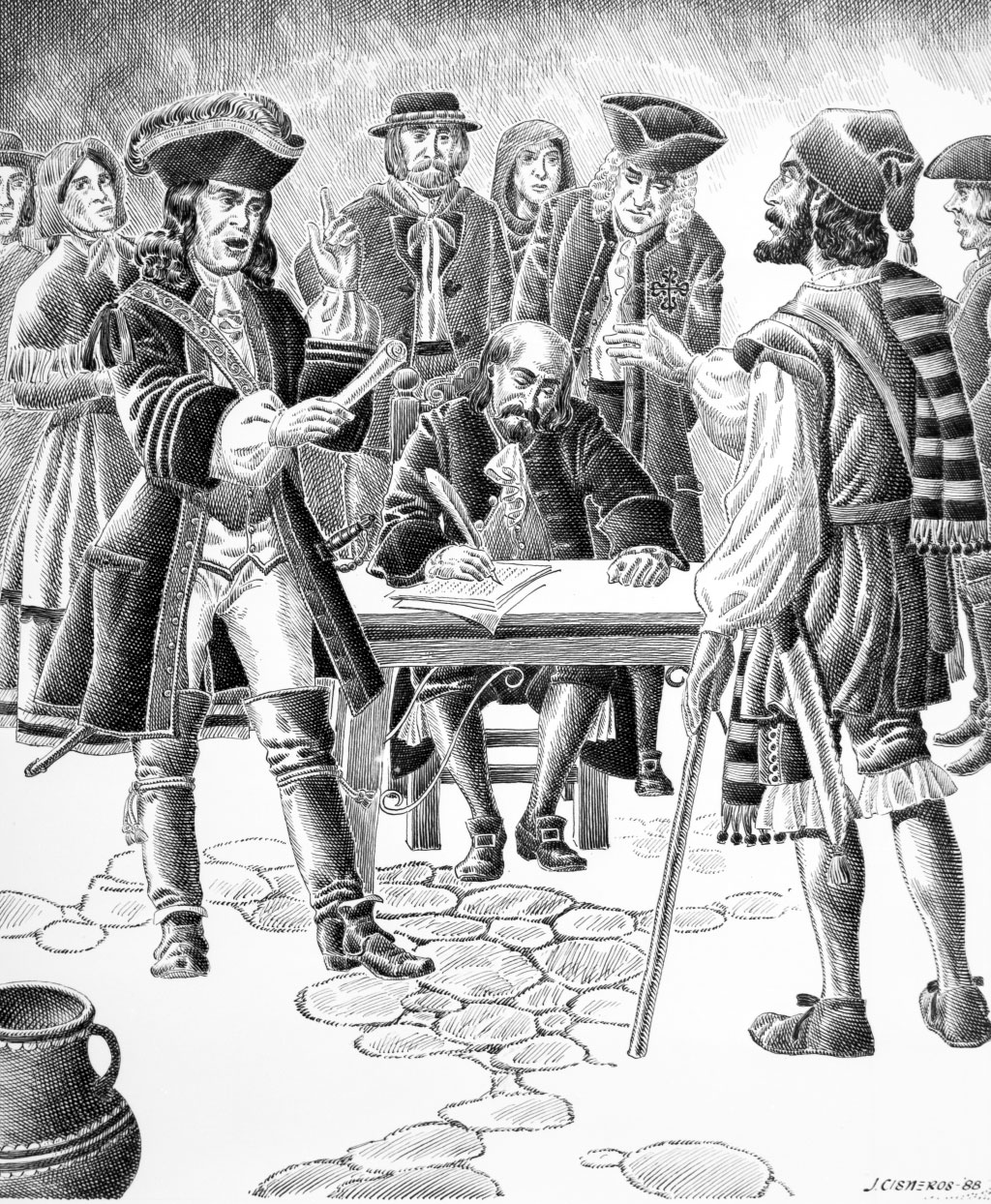This group of Isleños (Islanders) consisted of fifteen families—a total of 56 men, women, and children. They had been promised generous rewards at the end of their journey: the right to form a town government, land grants, and the title of hidalgo (a Spanish rank of nobility).
Captain Juan Antonio Pérez de Almazán, the commander of the presidio, laid out the plan for their new villa (town), which was called San Fernando de Béxar. It included a plaza, church, a government house, the ejido (town common) and labores (farm lands). Because the crown authorized it, this became the first official civilian settlement in Texas.
To provide water to the presidio, the villa of the Isleños, and nearby farming lands, a new acequia was dug. It stretched for four miles to the south—from San Pedro Springs to near the point where San Pedro Creek merges with the San Antonio River. The acequia was likely completed and functioning sometime in 1734, because in April of 1735, an Isleño senior alderman decreed that its embankments and fencing had to be repaired. Apparently, roaming livestock had trampled newly planted and irrigated fields—and this kind of thing was no longer going to be tolerated. What had been wild was now being tamed.



